Some of these were remarkably ahead of their times!
- Beauty
The Most Innovative Beauty Gadgets Invented In the Late 1800s and Early 1900s
- ByMeghna Sharma

Courtesy: Pinterest
The late 1800s and early 1900s witnessed a surge of innovative beauty tools aimed at sculpting the face and body and refining the skin. The gadgets—that came with the promise of delivering a clearer complexion, cinched waist, chiselled jawline, or a sharper node—were symbolic of the era’s shifting beauty ideals. While these devices may seem peculiar, they laid the foundation for the transformative tools and techniques that continue to shape the beauty industry today. The Word. has curated a list of innovations that captivated women striving for perfection at the time.
THE CHIN REDUCER AND BEAUTIFIER
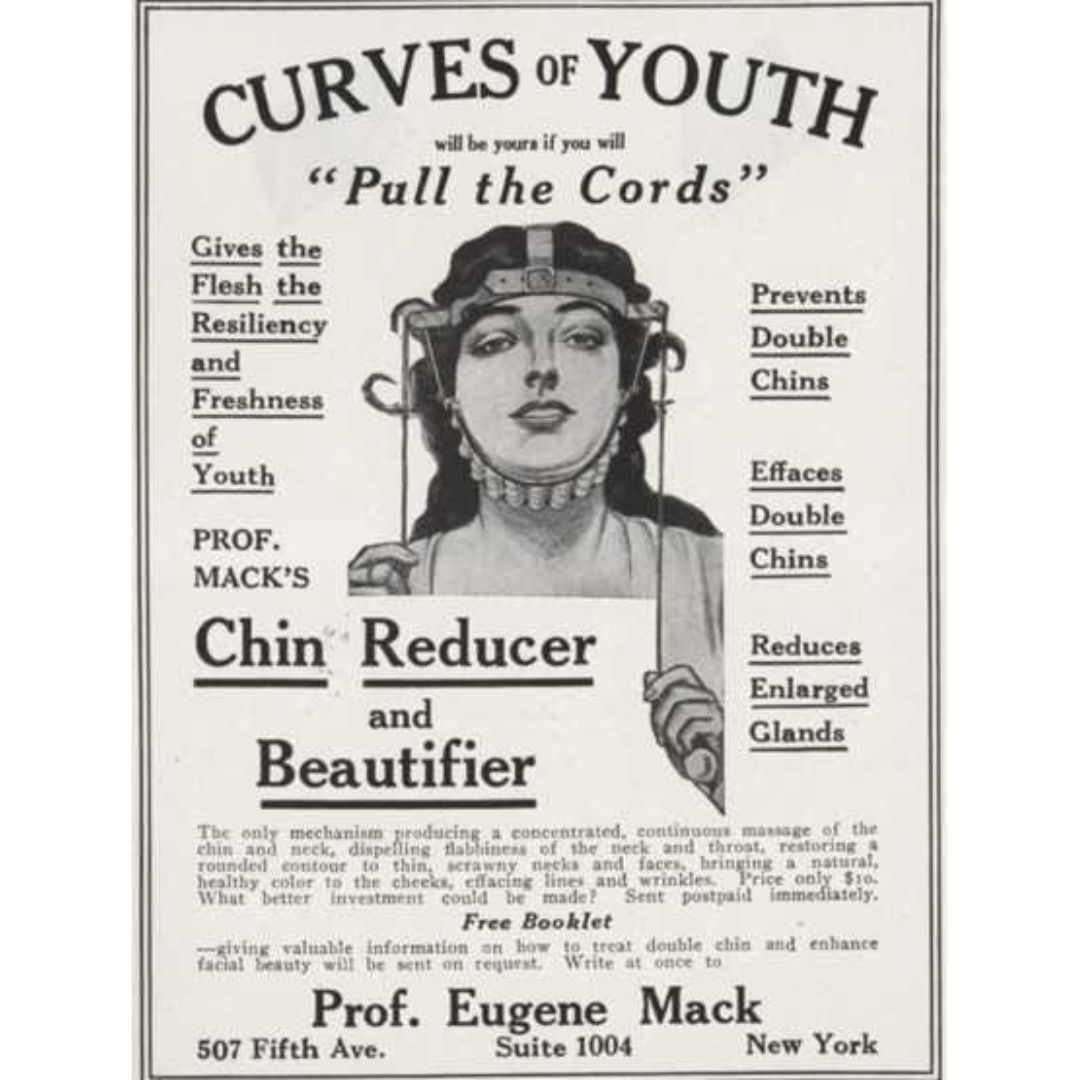
In the 1890s, Professor Eugene Mack from New York, USA, invented a tool that promised a chiselled jawline—but that wasn’t the only benefit of this contraption. The Chin Reducer and Beautifier claimed that it could treat swollen glands around the neck and chin area, and, in the process, also award you with a slimmer neck and contoured jawline. The ads also claimed that it could treat fine lines and winkles. Though its efficacy remains debated, the chin reducer hinted at modern techniques for facial toning, showcasing a visionary approach to beauty.
THE DIMPLE MAKER
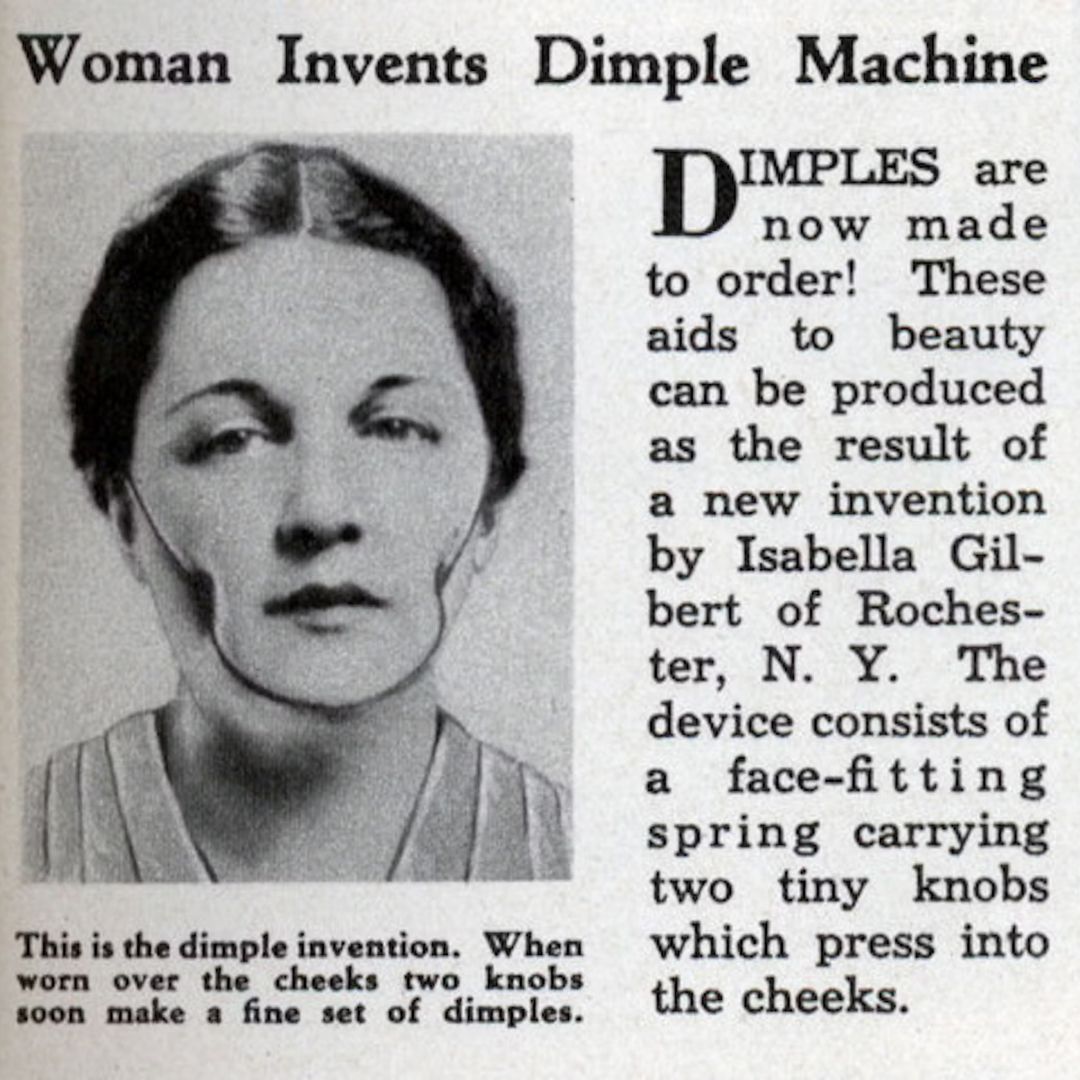
In 1936, American inventor Isabella Gilbert created the Dimple Maker to fulfil the desire for facial dimples. This spring-loaded device claimed to create dimples through consistent cheek pressure. Sadly, this invention was not just unsuccessful at curing the insecurity of women void of dimples, but research found that its use could lead to cancer.
MAX FACTOR BEAUTY MICROMETER
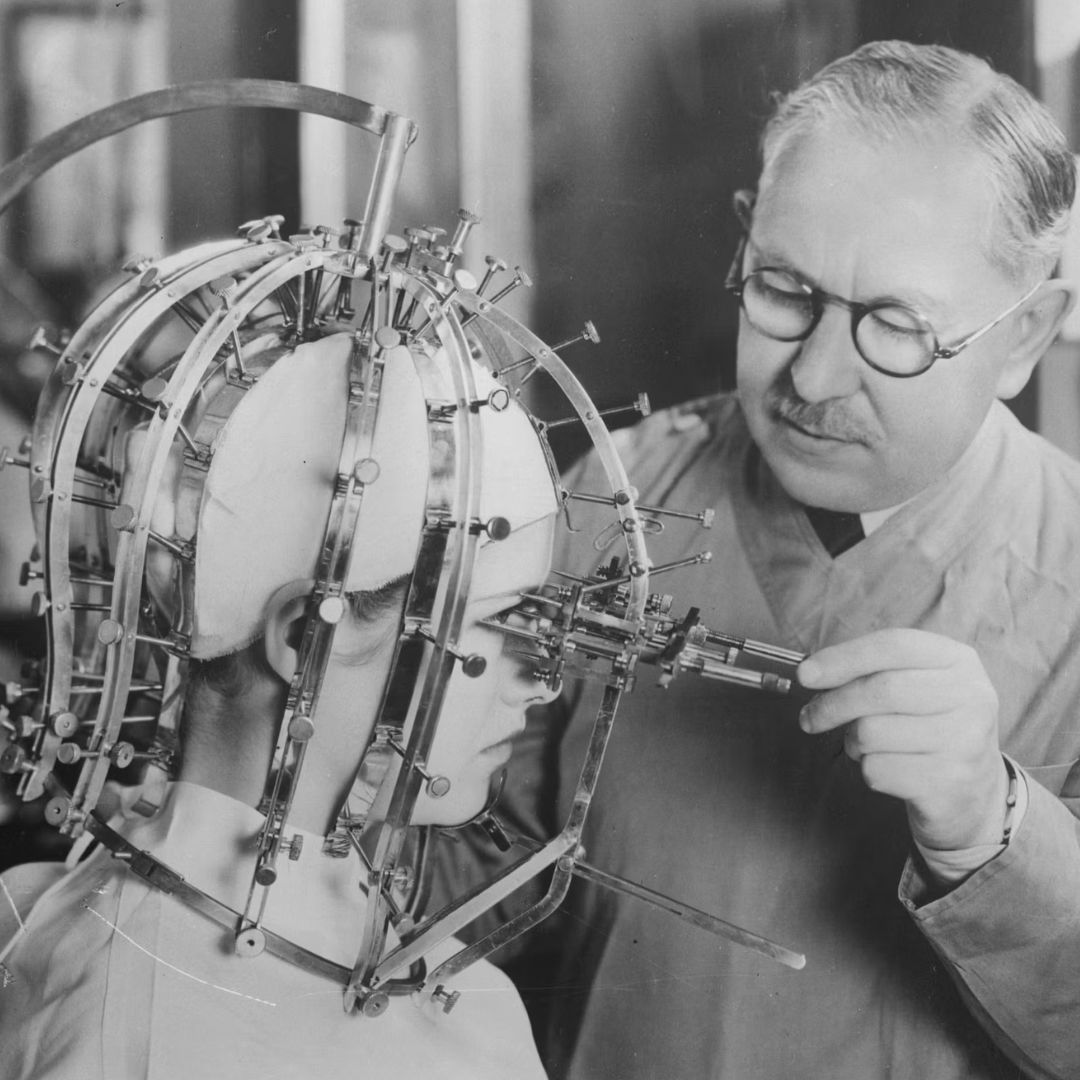
Hollywood make-up artist Max Factor unveiled the Beauty Micrometer in 1933, an intricate device designed to measure and analyse facial features. While not intended for daily use, this tool emphasised the importance of precise facial proportions in the pursuit of beauty. The Beauty Micrometer showcased an early understanding of facial aesthetics that would later influence cosmetic procedures and make-up application.
THE GLAMOUR BONNET
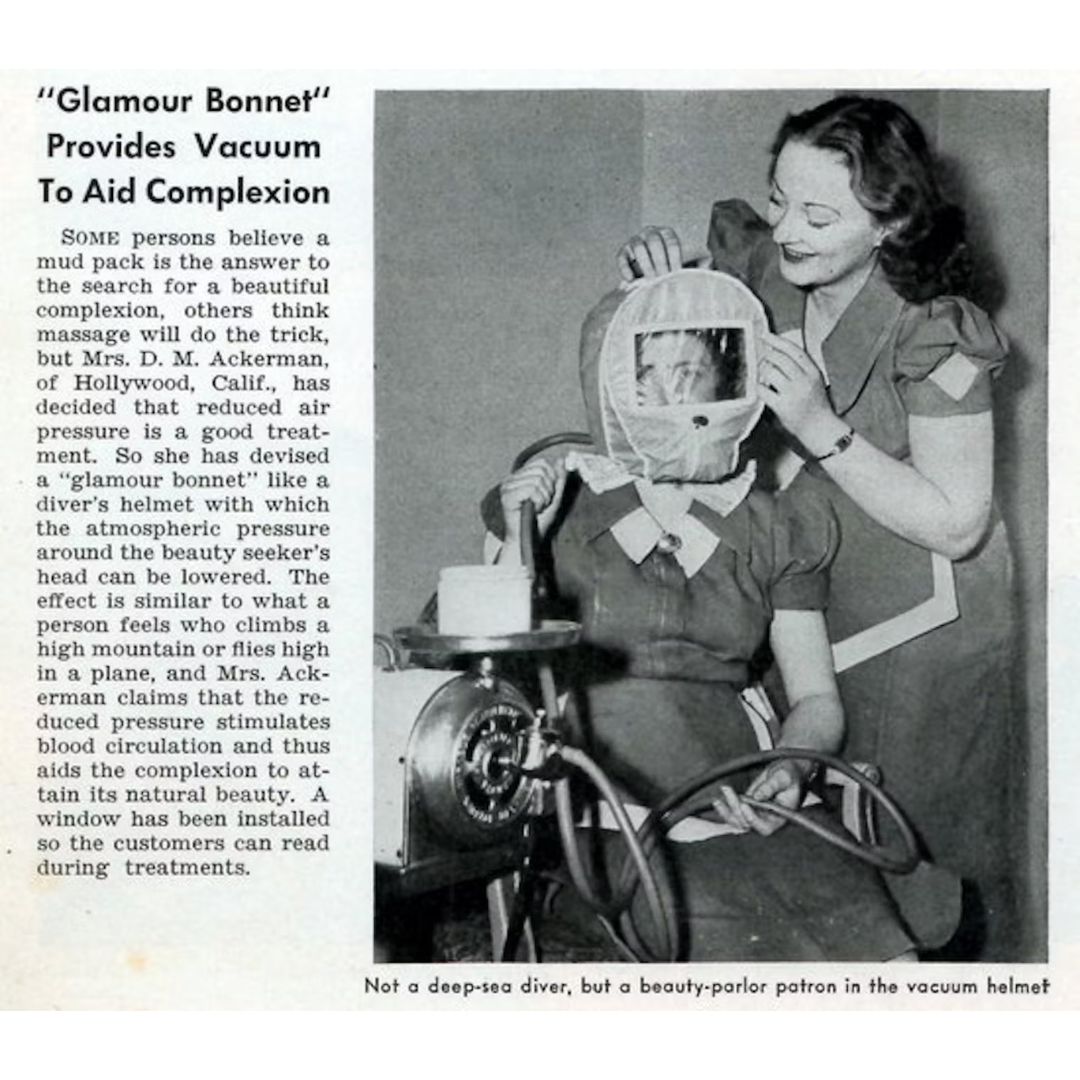
Invented by DM Ackerman for women who craved a fresh, glowing complexion, this device might sound glamorous in theory, but, in reality, made them light-headed. Shaped like a diver’s helmet, this device created a vacuum inside, lowering the atmospheric pressure, making one feel like they’re in a high-altitude area. DM Ackerman believed that the reduced pressure stimulates blood circulation, leaving one with a rosy glow.
THE BUST DEVELOPER
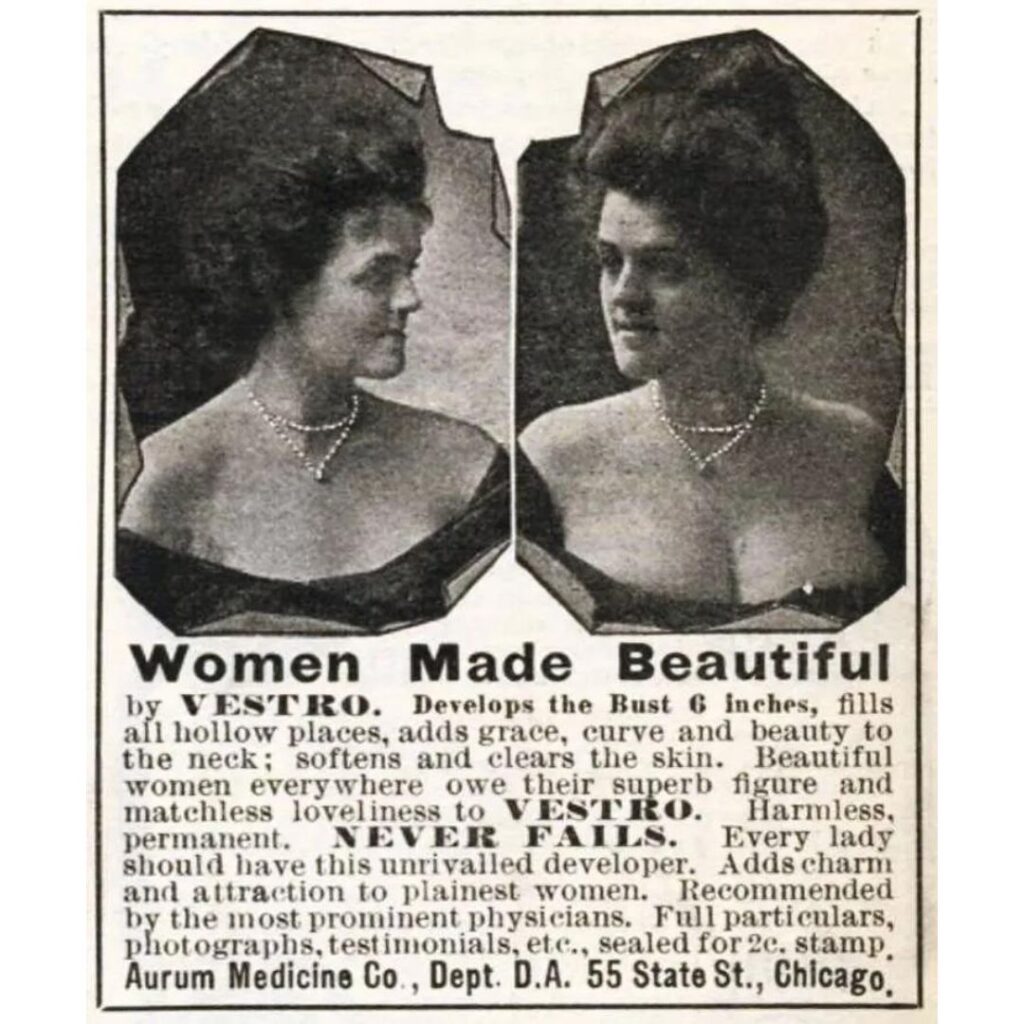
The early 1900s also saw the introduction of the Bust Developer, designed to enhance and reshape the female bust. This device, resembling a set of adjustable springs, claimed to tone and uplift the bust area. Although considered unconventional today, the Bust Developer highlighted the ongoing fascination with achieving an idealised figure.
THE ‘TOILET MASK’
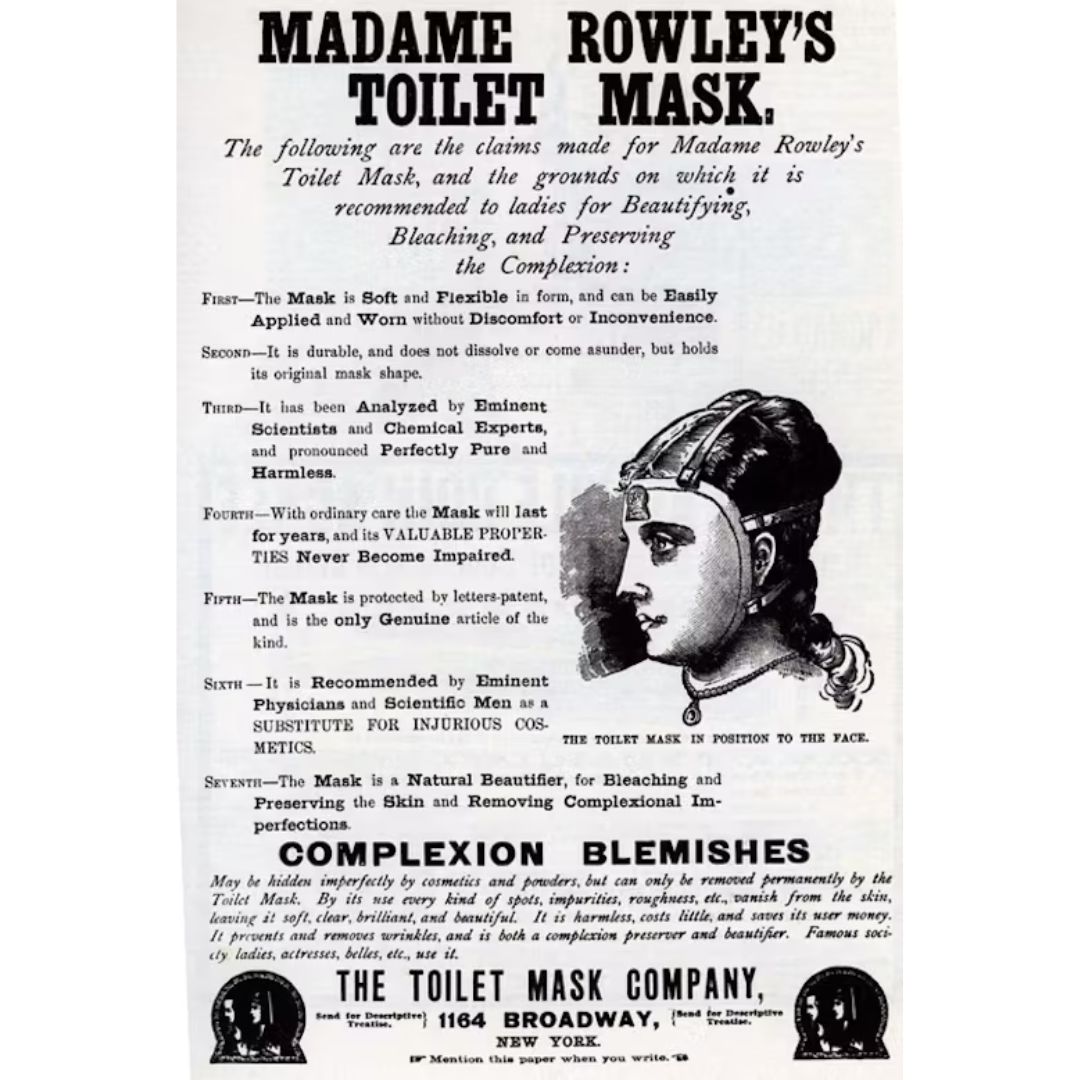
This ‘sheet mask’ from the Victorian era was meant specifically for the night-time routine. Madame Helen M Rowley, a milliner and dressmaker from America, created the Toilet Mask in 1875, for “medical purposes”. Made of soft, pliable rubber, it was meant to be worn “during the hours of sleep” to bleach, beautify, and preserve one’s complexion. According to Madame Rowley, her patented invention was created to “soften and clarify the skin by relieving the pores and superficial circulation”, and to apply “unguents or other medical preparations to the skin of the face for the palliation or cure of cutaneous eruptions, blotches, pimples or other similar complexional defects”.





